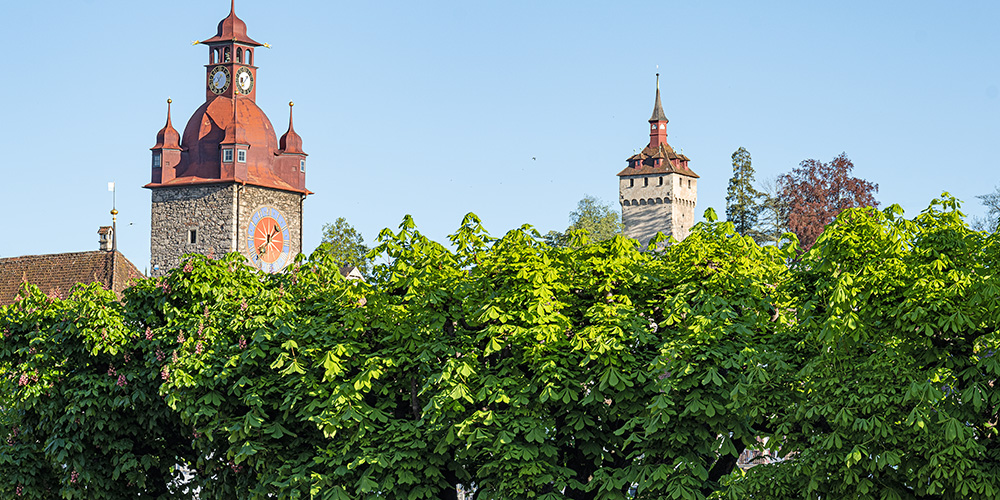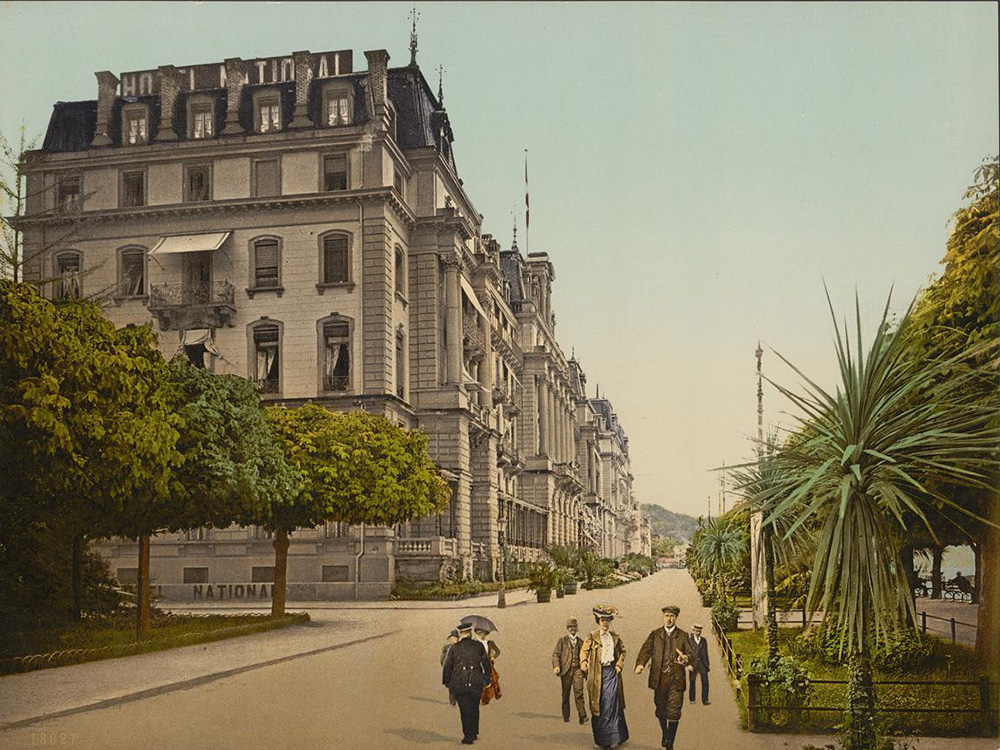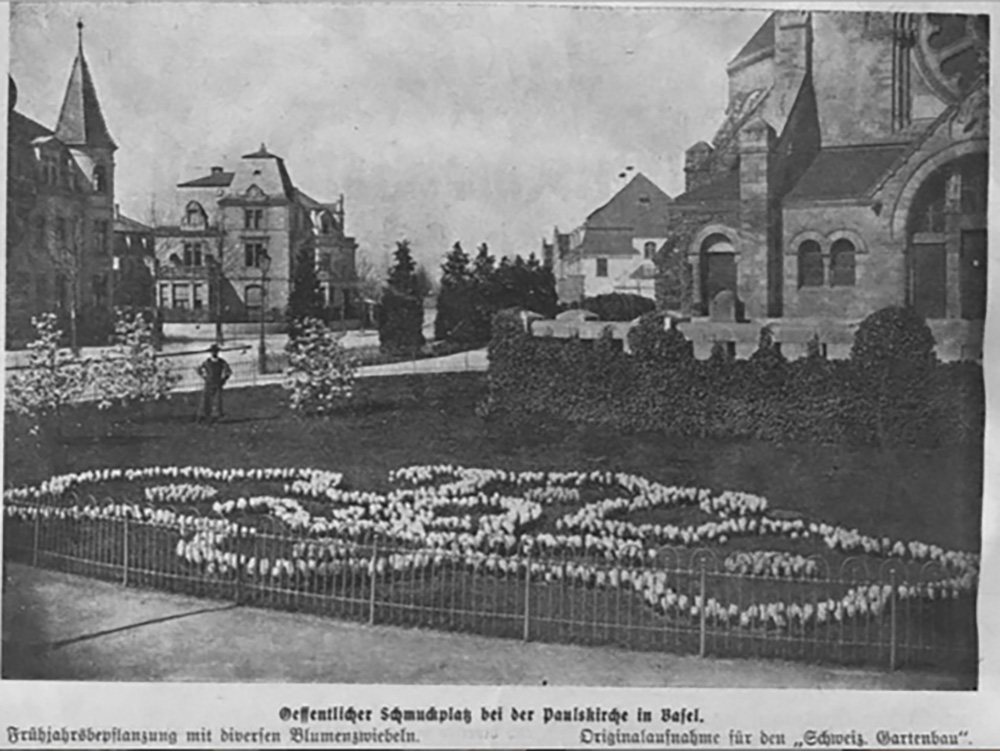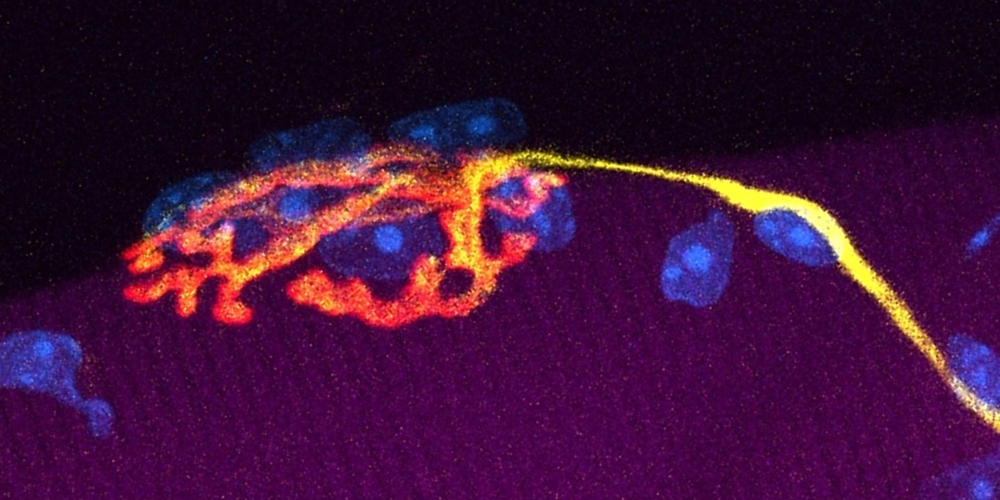Building or greening? Making space for urban plants
Dense settlement on one side, nature on the other. When space is short, we need to think hard about how to use it. What are the important criteria here? A historian from the University of Basel is writing a doctoral thesis on the fads and social development that have influenced green spaces in urban planning.
10 June 2024 | Noëmi Kern
Shady trees, lawns for playing or picnicking, beds of colorful flowers – a city is more than asphalt between rows of buildings. Green spaces are an important criterion for quality of life, as various city rankings illustrate. In the mid-19th century, these green and varied islands became a part of urban planning.
The criteria involved in urban design is the focus of the dissertation project “The City of Lucerne and its Green Spaces: A History of Urban Nature in the 19th and 20th Century,” which Linus Rügge will soon complete in the University of Basel’s Department of History. “The fact that cities and nature are seen today as opposites that need to be reunited – there must be a history there. I want to find out more about that,” says Rügge, who grew up in Lucerne.
Aesthetic notions of nature
“Urban development and social change were and are closely linked,” says the historian. This is demonstrated by various case studies that he examines in his doctoral thesis. Tourism was a driving force of urban development in Lucerne early on. Aesthetic considerations fed into the design of urban spaces; the townscape had to be appealing and it was important that the view of the mountains from hotel rooms not be obstructed by factory chimneys or apartment blocks.
Another example is the wetlands along Lake Lucerne. In the early 20th century, swarms of mosquitoes would plague the area for several weeks every spring. So the city authorities sprayed diesel oil in the wetlands to kill the mosquito larvae. Later, they used the insecticide DDT, manufactured in Basel. “As a tourist destination, Lucerne didn’t want to be considered backward because it didn’t have this problem under control,” says Rügge. Warnings from local fishermen and farmers complaining about lower fish stocks and polluted hay were long downplayed. “Ultimately they solved the problem by draining the wetlands and compensating the fishermen. That worked for all concerned – except for the reeds, the fish and the mosquitoes, which were cleared away,” the historian continues.
Cases like this show that there are divergent ideas about the design of urban space. “And because space is limited, the question arises: whose voice gets heard? That’s why nature in the city is always a social issue. The interests of nature itself often came last, because it was unable to speak for itself,” says Rügge.
Influence of the zeitgeist
The mid-19th century saw the rise of municipal parks and gardens departments – institutions that were responsible for maintaining and developing green spaces in the city. Employees looked abroad for design inspiration, as the travelogues of people like Lucerne municipal gardener Xaver Schlapfer attest; he would travel to other cities to get ideas for his own work. In Ghent and Brussels, for example, he was inspired by competitions for balcony plants, and in 1908 Schlapfer started awarding prizes for the most beautiful facade decorations in Lucerne – winners received exotic palm trees for their living room. The Basel Horticultural Society soon adopted the idea and tried to interest the people of Basel in gardening with a flower decoration competition. Schlapfer, the Lucerne municipal gardener, also visited Basel several times and found it to be at the cutting edge “with its splendor and variety of modern ornamental gardening.” He was particularly impressed by the water lilies in the Botanical Garden and the Schützenmattpark, which had recently opened.
“At the time, having a park was a must for a modern city,” says Rügge. In contrast to older parks, which were largely decorative, the model of the Volkspark (people’s park), which became fashionable after 1900, allowed people to move freely about the green spaces and meet up to play or picnic. The introduction of the eight-hour work day brought more leisure time, and as cities grew and traffic increased, parks became welcome oases of tranquility. “It was also considered important for children to be able to play outside,” says Rügge. Basel’s Schützenmattpark boasted popular leisure options, with a music pavilion and a playground that was converted into an ice rink in winter. “There was also a political idea behind it – the aim of the Volkspark was to bring all sections of the population together and lay the foundation for a healthy and happy population,” explains Rügge.
Demands are changing
In Lucerne, a local recreation area for the city’s inhabitants was created on Rotsee, a lake just outside the city. “Until the 1920s, the lake was a sewer with rubbish stored on its banks,” says Linus Rügge. But the city grew. When new houses were built near the lake, their owners were repelled by the stench and fought for the restoration of the lake. “The neighborhood association wanted to preserve the rural character of the area and established the first nature reserve in the city,” says Rügge. Building regulations also banned large apartment buildings, which kept poor families away.
The nature reserve still exists today, and the Rotsee is a regular venue for rowing regattas. Rügge acknowledges, “At the time, the motives were highly self-serving, because they wanted to preserve the rural idyll of their own living environment. But we are still benefiting from the results of these initiatives today.”
Maintaining what we have and preparing for the future
The idea that green elements in urban spaces are important for recreation and as places for the population to gather has persisted – especially in this era of high-density construction and climate change. Biodiversity, unsealing, air quality and cooling, as well as switching to more climate-resistant species, are key design aspects for these spaces. These same principles guide Stadtgrün Lucerne in its maintenance and development of trees and green spaces.
“These efforts are important,” says Rügge, adding that it is always worth noting the species, landscapes, goals and ideals that are promoted when we talk about “nature”. “Who doesn’t like nature? However, my research shows that not every argument ‘for nature’ in the 20th century was as selfless as it seemed. And I want to create an awareness that there were different actors with diverse, sometimes even contradictory interests who were speaking in the name of urban nature. We still need to keep that in mind today.”





